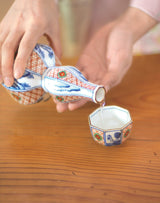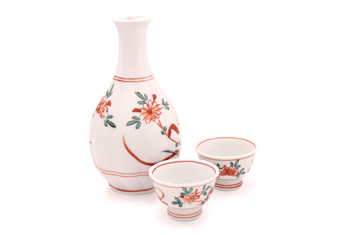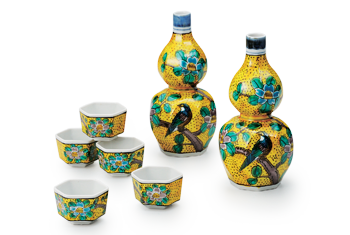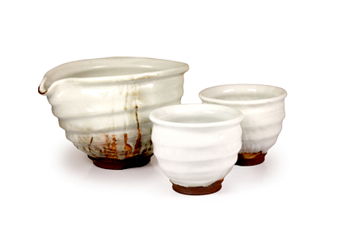How to choose Sake Set and drink Sake
A Sake Set is a generally for Sake Carafe called a Tokkuri and Cups called an Ochoko. There are hundreds of styles of Sake Sets designed for different purposes and types of sake. Here are a few guidelines to help you choose Sake Set.
1. Size of the cup diameter
Same as wine, exploring the aromas of sake is an important step to enjoying the full tasting experience of the sake. If your sake cup is too small, you can't enjoy the aromas of sake. Choose at least two different sake cups for the same sake. Try the differences!
2. Size of Sake Carafe
The size of the Carafe is equally important. Using the larger size of carafe makes sake warmer. Rapid temperature changes can cause loosing the flavor of the Sake.
How to drink sake

1. Warm (Hot) Sake
Generally high-grade sake is not drunk hot because the aroma and flavor of sake will be lost. However hot alcohol beverage is rare worldwide. Hot sake is the one of the unique characteristics of tasting sake. In very general, Serving at 120° to 130°F is the ideal temperature for hot sake. But exploring your favorite temperature for the hot sake is another way to enjoy the sake.
2. Cold Sake
When sake is over-chilled you can't taste anything. Serving 44° to 50°F is the ideal temperature for cold sake.
Each person has his or her own favorite way of enjoying SAKE. Whether it is crisp, chilled SAKE, subtly warmed SAKE, or throat warming hot SAKE, we hope you will enjoy discovering your own personal favorite.
How to serve and how to drink sake

First of all, the sake must be served at the appropriate temperature. Honjozo-shu and junmai-shu are usually served at room temperature, and ginjo-shu and namazake are chilled. Sake should not be served above room temperature.
The tokkuri should be held with both hands and every guest's cup should be filled up before the cup of the person serving. It is the duty of every guest to ensure the host is also served.
If the host has higher status than the guest, he can pour with one hand only.
While being served, the cup must be held with the right hand wrapped around the cup, and the other hand resting in the palm of the other hand. However, if the person serving sake has lower status, the cup is supposed to be held with only one hand.
Toast
In a Japanese restaurant, you can say "Kenpai", and proceed to touch the cups together. If someone in the group has higher status than another one, the cup of the person with the lower status should never be above the cup of the person with the higher status.
Our Sake Set
Imari (Arita) Porcelain

Imari (Arita) porcelain is the name for Japanese porcelain wares made in the town of Arita. The craftsmanship, production, drawing techniques, and unique designs with 400 years of history, continues to make Arita porcelain number one in Japan.
Kutani Ware

Kutani ware which is multicolored over glazed porcelain is incredibly precious and highly appreciated due to its unique, formal and vigorous beauty.

